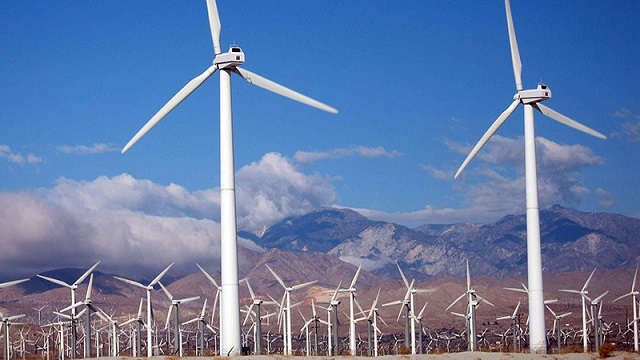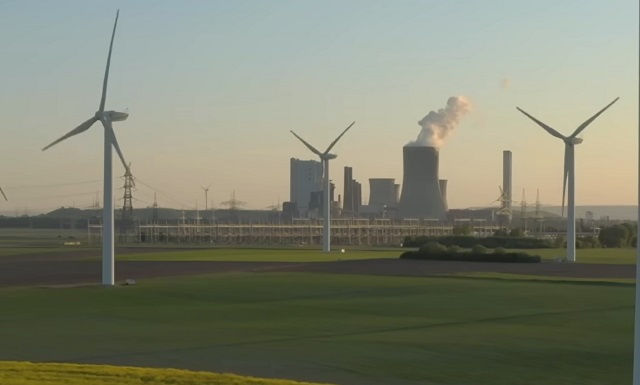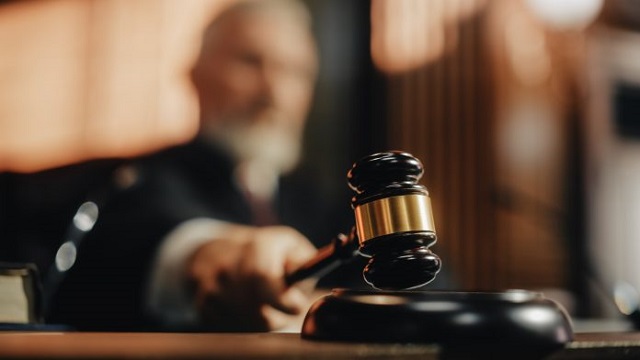Alberta
Reading and math scores plummet across Canada after COVID school closures

From the Fraser Institute
By Derek J. Allison – Professor Emeritus, Faculty of Education, The University of Western Ontario
Canada’s losses were similar, with a drop of 13 points in reading and 15 points in math. For context, a 20-point decline in test scores equals roughly one year of learning loss.
COVID school closures took a heavy toll on student learning. For parents in Canada, that’s the main takeaway from the new Programme for International Student Assessment (PISA) test results, which show substantial declines from 2018 pre-pandemic results in reading and math among 15-year-olds (the only age that participates in PISA testing).
Among high-income OECD countries, average PISA scores dropped by an unprecedented 10 points in reading and 15 points in math. Canada’s losses were similar, with a drop of 13 points in reading and 15 points in math. For context, a 20-point decline in test scores equals roughly one year of learning loss.
How did the provinces do? This is an important question, as we don’t have a national education system in Canada.
Reading scores dropped in all provinces, with the worst decline in Newfoundland and Labrador (34 points) followed by Nova Scotia (27 points), New Brunswick (20 points), Quebec (18 points), Saskatchewan (15 points), Ontario (12 points), British Columbia and Manitoba (8 points), and Prince Edward Island and Alberta (7 points).
A similar pattern emerges in math, with Newfoundland and Labrador again suffering the greatest decline (29 points) followed by Nova Scotia (24 points), New Brunswick (23 points), Quebec and Ontario (18 points), Saskatchewan (17points), Manitoba (12 points), P.E.I. (9 points), B.C. (8 points) and Alberta (7 points).
In science, the news was somewhat better, with some provinces modestly improving and only Nova Scotia (16 points) and Newfoundland and Labrador (15 points) dropping by more than 10 points. Clearly, with the exception of P.E.I., the Atlantic provinces had the greatest losses between 2018 pre-pandemic and 2022 post-pandemic test scores.
Despite the broad harvest of decline across Canada, the distribution of provincial scores remains similar to earlier results. As in 2018 and earlier, the four largest provinces—Ontario, Quebec, B.C. and Alberta—have the highest scores in all three subjects. Quebec continues to be the highest-scoring province in math, with overlapping margins of error for the other large provinces. Math scores for the remaining provinces cluster together at a significantly lower level, with P.E.I. in the middle and Newfoundland and Labrador replacing Manitoba in last place.
Reading and science scores follow a similar pattern, but with Alberta in pole position with significantly higher scores in both subjects, the other larger provinces forming a second rank cluster, and the remaining provinces a third.
The new PISA results include a rich body of information on both the extent and nature of the pandemic disruptions, which casts revealing light on the unprecedented collapse in test scores. But crucially, the large differences in score declines between the provinces cannot be simply explained by how long schools were closed. The extent and quality of learning alternatives, teacher and parental support, and socio-economic status also played important roles.
While it will take time to better understand how some provinces and schools weathered the pandemic disruptions better than others, the drops in PISA test scores underscore the challenges students and teachers face today, especially in the hardest hit provinces.
Author:
Alberta
Game changer: Trans Mountain pipeline expansion complete and starting to flow Canada’s oil to the world
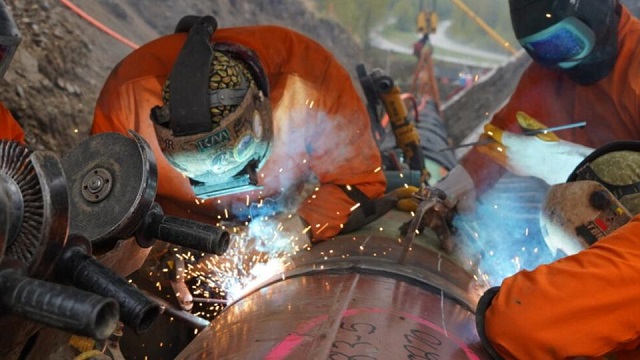
Workers complete the “golden weld” of the Trans Mountain pipeline expansion on April 11, 2024 in the Fraser Valley between Hope and Chilliwack, B.C. The project saw mechanical completion on April 30, 2024. Photo courtesy Trans Mountain Corporation
From the Canadian Energy Centre
By Will Gibson
‘We’re going to be moving into a market where buyers are going to be competing to buy Canadian oil’
It is a game changer for Canada that will have ripple effects around the world.
The Trans Mountain pipeline expansion is now complete. And for the first time, global customers can access large volumes of Canadian oil, with the benefits flowing to Canada’s economy and Indigenous communities.
“We’re going to be moving into a market where buyers are going to be competing to buy Canadian oil,” BMO Capital Markets director Randy Ollenberger said recently, adding this is expected to result in a better price for Canadian oil relative to other global benchmarks.
The long-awaited expansion nearly triples capacity on the Trans Mountain system from Edmonton to the West Coast to approximately 890,000 barrels per day. Customers for the first shipments include refiners in China, California and India, according to media reports.
Shippers include all six members of the Pathways Alliance, a group of companies representing 95 per cent of oil sands production that together plan to reduce emissions from operations by 22 megatonnes by 2030 on the way to net zero by 2050.
The first tanker shipment from Trans Mountain’s expanded Westridge Marine Terminal is expected later in May.
 Photo courtesy Trans Mountain Corporation
Photo courtesy Trans Mountain Corporation
The new capacity on the Trans Mountain system comes as demand for Canadian oil from markets outside the United States is on the rise.
According to the Canada Energy Regulator, exports to destinations beyond the U.S. have averaged a record 267,000 barrels per day so far this year, up from about 130,000 barrels per day in 2020 and 33,000 barrels per day in 2017.
“Oil demand globally continues to go up,” said Phil Skolnick, New York-based oil market analyst with Eight Capital.
“Both India and China are looking to add millions of barrels a day of refining capacity through 2030.”
In India, refining demand will increase mainly for so-called medium and heavy oil like what is produced in Canada, he said.
“That’s where TMX is the opportunity for Canada, because that’s the route to get to India.”
Led by India and China, oil demand in the Asia-Pacific region is projected to increase from 36 million barrels per day in 2022 to 52 million barrels per day in 2050, according to the U.S. Energy Information Administration.
More oil coming from Canada will shake up markets for similar world oil streams including from Russia, Ecuador, and Iraq, according to analysts with Rystad Energy and Argus Media.
Expanded exports are expected to improve pricing for Canadian heavy oil, which “have been depressed for many years” in part due to pipeline shortages, according to TD Economics.
 Photo courtesy Trans Mountain Corporation
Photo courtesy Trans Mountain Corporation
In recent years, the price for oil benchmark Western Canadian Select (WCS) has hovered between $18-$20 lower than West Texas Intermediate (WTI) “to reflect these hurdles,” analyst Marc Ercolao wrote in March.
“That spread should narrow as a result of the Trans Mountain completion,” he wrote.
“Looking forward, WCS prices could conservatively close the spread by $3–4/barrel later this year, which will incentivize production and support industry profitability.”
Canada’s Parliamentary Budget Office has said that an increase of US$5 per barrel for Canadian heavy oil would add $6 billion to Canada’s economy over the course of one year.
The Trans Mountain Expansion will leave a lasting economic legacy, according to an impact assessment conducted by Ernst & Young in March 2023.
In addition to $4.9 billion in contracts with Indigenous businesses during construction, the project leaves behind more than $650 million in benefit agreements and $1.2 billion in skills training with Indigenous communities.
Ernst & Young found that between 2024 and 2043, the expanded Trans Mountain system will pay $3.7 billion in wages, generate $9.2 billion in GDP, and pay $2.8 billion in government taxes.
Alberta
Alberta government should eliminate corporate welfare to generate benefits for Albertans
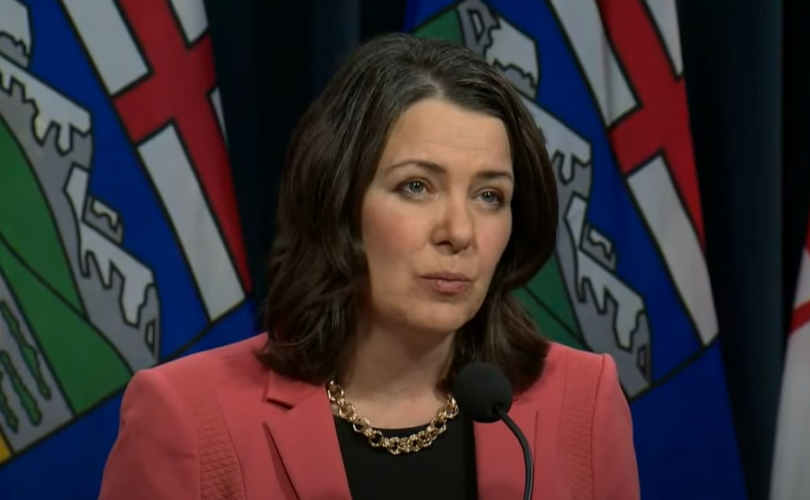
From the Fraser Institute
By Spencer Gudewill and Tegan Hill
Last November, Premier Danielle Smith announced that her government will give up to $1.8 billion in subsidies to Dow Chemicals, which plans to expand a petrochemical project northeast of Edmonton. In other words, $1.8 billion in corporate welfare.
And this is just one example of corporate welfare paid for by Albertans.
According to a recent study published by the Fraser Institute, from 2007 to 2021, the latest year of available data, the Alberta government spent $31.0 billion (inflation-adjusted) on subsidies (a.k.a. corporate welfare) to select firms and businesses, purportedly to help Albertans. And this number excludes other forms of government handouts such as loan guarantees, direct investment and regulatory or tax privileges for particular firms and industries. So the total cost of corporate welfare in Alberta is likely much higher.
Why should Albertans care?
First off, there’s little evidence that corporate welfare generates widespread economic growth or jobs. In fact, evidence suggests the contrary—that subsidies result in a net loss to the economy by shifting resources to less productive sectors or locations (what economists call the “substitution effect”) and/or by keeping businesses alive that are otherwise economically unviable (i.e. “zombie companies”). This misallocation of resources leads to a less efficient, less productive and less prosperous Alberta.
And there are other costs to corporate welfare.
For example, between 2007 and 2019 (the latest year of pre-COVID data), every year on average the Alberta government spent 35 cents (out of every dollar of business income tax revenue it collected) on corporate welfare. Given that workers bear the burden of more than half of any business income tax indirectly through lower wages, if the government reduced business income taxes rather than spend money on corporate welfare, workers could benefit.
Moreover, Premier Smith failed in last month’s provincial budget to provide promised personal income tax relief and create a lower tax bracket for incomes below $60,000 to provide $760 in annual savings for Albertans (on average). But in 2019, after adjusting for inflation, the Alberta government spent $2.4 billion on corporate welfare—equivalent to $1,034 per tax filer. Clearly, instead of subsidizing select businesses, the Smith government could have kept its promise to lower personal income taxes.
Finally, there’s the Heritage Fund, which the Alberta government created almost 50 years ago to save a share of the province’s resource wealth for the future.
In her 2024 budget, Premier Smith earmarked $2.0 billion for the Heritage Fund this fiscal year—almost the exact amount spent on corporate welfare each year (on average) between 2007 and 2019. Put another way, the Alberta government could save twice as much in the Heritage Fund in 2024/25 if it ended corporate welfare, which would help Premier Smith keep her promise to build up the Heritage Fund to between $250 billion and $400 billion by 2050.
By eliminating corporate welfare, the Smith government can create fiscal room to reduce personal and business income taxes, or save more in the Heritage Fund. Any of these options will benefit Albertans far more than wasteful billion-dollar subsidies to favoured firms.
Authors:
-

 Alberta12 hours ago
Alberta12 hours agoGame changer: Trans Mountain pipeline expansion complete and starting to flow Canada’s oil to the world
-

 Brownstone Institute1 day ago
Brownstone Institute1 day agoBook Burning Goes Digital
-

 conflict1 day ago
conflict1 day agoOver 200 Days Into War, Family Of American Hostage in Gaza Strives For Deal To Bring Son Home
-
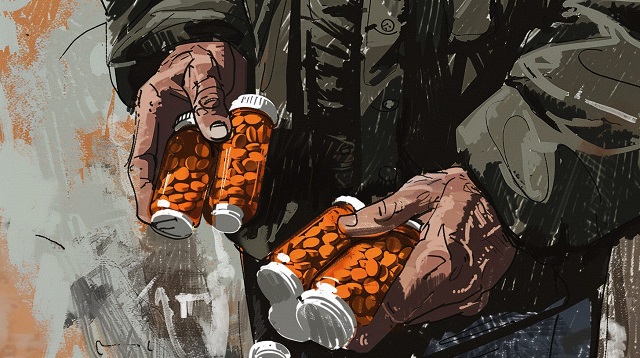
 Addictions12 hours ago
Addictions12 hours agoCanada’s ‘safer supply’ patients are receiving staggering amounts of narcotics
-

 Brownstone Institute20 hours ago
Brownstone Institute20 hours agoThe Predictable Wastes of Covid Relief
-
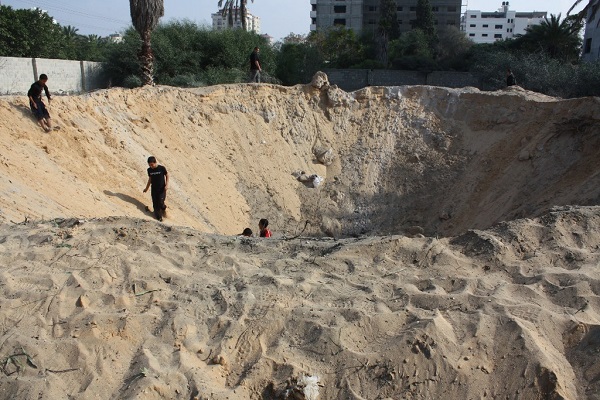
 conflict7 hours ago
conflict7 hours agoImmigration Experts Warn Possible Biden Plan To Import Gazan Refugees Would Be ‘National Security Disaster’
-

 Bruce Dowbiggin8 hours ago
Bruce Dowbiggin8 hours agoDo It Once, Shame On You; Do It Twice, Shame On Me
-

 Community9 hours ago
Community9 hours agoLast Day: What would you do with $20,000 Early Bird Prize?






